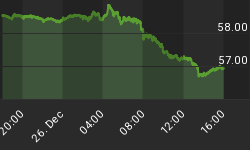"Every portfolio should have a 10% core holding of gold and silver as emergency money" was the simple and timeless message in Glen O. Kirsch conveyed 19 years ago in an article entitled: "What's in Your Core Holdings?" and such a message is even more appropriate today given the unsettling fiscal, economic and investment environment.
Kirsch went on to say that such "money" would be principally for protection, not profit, and function as insurance against a catastrophe, i.e. as your bridge across any social, political and economic abyss. It would be your ace in the hole that you hoped you would never have to use.
Asset Allocation Recommendations Go As High as 50% for Physical Gold and Silver
H.C. Wainwright & Co. has gone one step further providing research that indicates that every portfolio should have a core holding of 15% gold to further offset the ravages of future inflation. For research details see: ![]() Wainwright Economics - Strategic Asset Selector
Wainwright Economics - Strategic Asset Selector
Harry Schultz is one of those who think a major catastrophe is looming on the horizon. He predicts that gold will reach a parabolic top of $6,000 per ounce. He currently recommends an asset allocation of: 30-40% government notes, bills and/or bonds; 10-15% commodities; 8-10% stocks and 40-50% precious metals made up of 5% juniors, 15% gold/silver producers and 20-30% physical bullion. Schultz believes holding such a large position in physical gold is a means to partly exit the banking system, to protect oneself against bank failures, to legally transport wealth, to off-set inflation, and for privacy.
Current Ownership of Gold is Negligible
Ronald-Peter Stoferle, an analyst with Erste Bank, recently published a 68 page report entitled "In GOLD we trust" in which he concluded that, given the fact that only 0.8% of all global financial assets are currently invested in gold, gold shares and ETFs, it is hardly indicative of gold being anywhere near bubble territory as of yet.
According to Stoferle, many studies show that gold, as part of a portfolio, reduces overall risk and improves portfolio performance. Importantly, as gold is not linked to any liability or promise as opposed to shares or bonds, he recommends it for diversification purposes.
Many Reasons to Own Gold
Ben Davies of London-based Hinde Capital, in a report entitled "Why Gold?" maintains that there are three principal reasons for investing in gold, namely, that 1) Gold is insurance, 2) Gold is undervalued and 3) Gold is in demand. He could perhaps now add that 4) Gold is in short supply. Davies is extremely bullish on the future price of gold believing that it will eventually go to a parabolic peak of from $10,000 to $15,000.
John Embry at Investor's Digest of Canada recently wrote an article entitled: "Gold's on the cusp of a parabolic move up" in which he made the following key points:
1. The IMF is now being forced to dump what gold it still has available into the market to restrain the rising price.
2. Western central banks have nowhere near the amount of gold in their vaults that they claim.
3. Due to physical shortages the western central banks can no longer supply the amount needed to balance supply and demand.
4. Mine production continues to stagnate at best.
Mr. Embry's message is that it is imperative that investors ignore the volatility created by the anti-gold cartel (although corrections orchestrated by the Orwellians who mistakenly believe they can maintain control will remain an irritant) and use every opportunity that is created by them to purchase more physical gold.
Conclusion
We are now entering the final chapter in which the anti-gold cartel will throw the dice in a last ditch attempt to manage the price of gold. That's all the more reason to hold the aces of a solid portfolio - physical gold and silver - and maybe some platinum too!
















